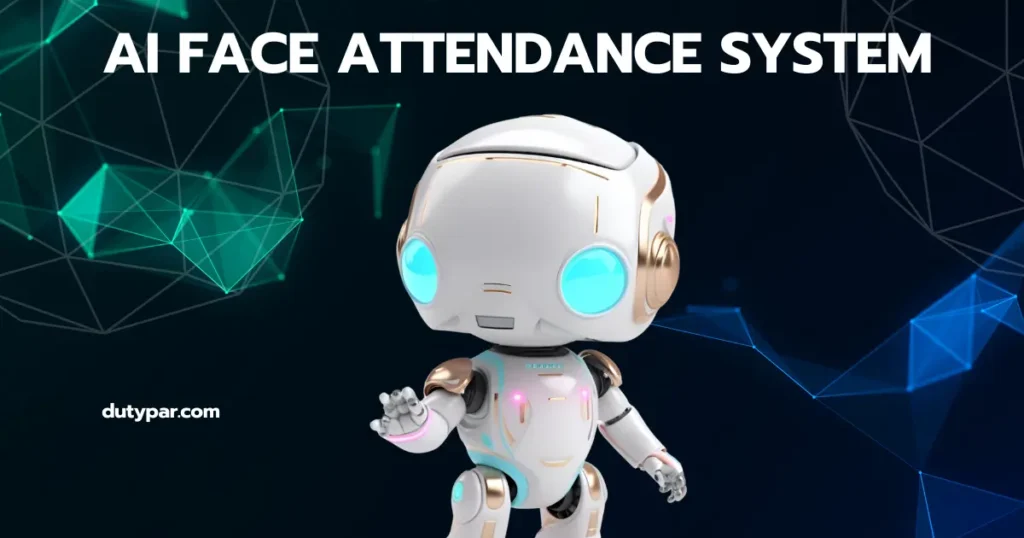Table of contents
- Introduction:
- Understanding the Basics of a Face Recognition Attendance System
- Key Components of a Face Recognition Attendance System
- Step-by-Step Process of How a Face Recognition Attendance System Works
- Technologies Behind Face Recognition Attendance Systems
- Benefits of Using a Face Recognition Attendance System
- Real-World Applications
- Potential Challenges and Considerations
- Conclusion

Introduction:
Face recognition technology has become an essential part of various sectors, including security, finance, healthcare, and education. One notable application is the face recognition attendance system, a solution widely adopted by organizations to streamline attendance management. But how does a face recognition attendance system work? This article will provide an easy-to-understand overview of how this technology operates and its key benefits.
Understanding the Basics of a Face Recognition Attendance System
A face recognition attendance system is an automated method for recording attendance by identifying individuals based on their facial features. Unlike traditional methods such as manual entry, ID cards, or fingerprints, this system is contactless, more efficient, and often more secure.
The system works using advanced algorithms and artificial intelligence (AI) to identify and verify a person’s face. It compares the captured face with stored images in its database. When a match is found, the system records the attendance. This technology has gained popularity due to its ability to reduce errors, eliminate buddy punching (where one person clocks in for another), and improve overall productivity.
Key Components of a Face Recognition Attendance System
To understand how a face recognition attendance system works, we need to look at its main components:
- Camera: The camera captures real-time images or video frames of a person standing in front of the attendance terminal.
- Facial Recognition Software: This software processes the captured images to detect and recognize facial features. It uses AI and machine learning to enhance accuracy over time.
- Database: A secure database stores all registered users’ facial data. The system compares the captured image to this database to verify the identity of the person.
- User Interface: This is where users interact with the system, either through a mobile app or a physical terminal.
- Processing Unit: This component performs all the computations needed to identify and verify faces. It is the brain of the system, handling everything from image preprocessing to facial feature extraction.
Step-by-Step Process of How a Face Recognition Attendance System Works
To break down how a face recognition attendance system works, here’s a step-by-step explanation:
- Image Capture: When an individual approaches the attendance terminal, the camera captures their face. The system can work in real-time or by detecting movement.
- Face Detection: The captured image undergoes face detection. At this stage, the software identifies the presence of a face in the image. It isolates the face from the background and focuses on key areas like the eyes, nose, and mouth.
- Feature Extraction: Once the face is detected, the system extracts unique facial features. These features, also known as facial landmarks, could include the distance between the eyes, the shape of the cheekbones, the length of the jawline, etc. The system converts these features into a mathematical model known as a “faceprint.”
- Face Matching: The generated faceprint is then compared with the existing faceprints stored in the database. If a match is found, the system confirms the person’s identity.
- Attendance Marking: After verifying the individual’s identity, the system marks the attendance. It can log the time and date automatically, thus minimizing human error.
- Data Storage and Management: The attendance data is securely stored in a database and can be accessed by authorized personnel for record-keeping, payroll processing, or other administrative purposes.
Technologies Behind Face Recognition Attendance Systems
To understand better how a face recognition attendance system works, it is important to explore the technologies behind it:
- Artificial Intelligence (AI) and Machine Learning (ML): AI and ML are the backbone of face recognition systems. These technologies allow the system to learn and improve its accuracy over time. For instance, if a person changes their hairstyle or wears glasses, AI algorithms adapt and continue to recognize the face correctly.
- Deep Learning: This subset of ML uses neural networks to analyze complex patterns in data. Deep learning models are highly effective in identifying facial features and differentiating between similar-looking faces.
- 3D Face Recognition: Traditional systems rely on 2D images, which can sometimes be less accurate due to lighting or angles. However, some advanced systems use 3D face recognition technology. It captures three-dimensional data of the face, providing a more accurate and reliable identification process.
- Infrared Cameras: Some systems incorporate infrared cameras to capture facial data even in low-light conditions. This feature ensures the system works effectively regardless of the environment.
Benefits of Using a Face Recognition Attendance System
Adopting a face recognition attendance system comes with several benefits:
- Enhanced Accuracy and Reliability: Face recognition technology offers a higher level of accuracy compared to conventional methods. By identifying individuals based on unique facial features, the system significantly reduces the risk of errors and ensures reliable attendance tracking.
- Time Efficiency and Productivity: The real-time processing capability of the face recognition system speeds up the attendance tracking process. Employees or students can quickly scan their faces, eliminating the need for manual check-ins and saving valuable time for both the management and the attendees.
- Elimination of Fraudulent Activities: One of the key advantages of face recognition attendance systems is their ability to eliminate fraudulent practices like buddy punching. Since each individual’s facial features are unique, the system cannot be easily deceived, ensuring data integrity.
- Seamless Integration and Scalability: Face recognition attendance systems can seamlessly integrate with existing HR and payroll systems, making it easy to implement in various organizations regardless of their size. The system’s scalability allows it to accommodate the needs of both small businesses and large corporations.
- Improved Security and Data Privacy: Facial data is securely stored and encrypted in the system, protecting sensitive information and complying with data privacy regulations. This level of security instils confidence in both the organization and the attendees.
- Contactless Attendance Tracking: In the era of the COVID-19 pandemic, contactless solutions have gained significant importance. Face recognition systems allow for touchless attendance tracking, reducing the risk of virus transmission in crowded places.
Real-World Applications
Many companies have successfully implemented face recognition attendance systems. Companies like Indo AI and DutyPar are known for their advanced facial recognition software solutions. They provide reliable and secure attendance systems that cater to diverse sectors such as education, corporate, healthcare, and more.
- IndoAI has developed a face recognition attendance system that focuses on high accuracy and quick processing times. It is highly customizable and integrates seamlessly with existing HR management systems.
- DutyPar provides a comprehensive solution that not only manages attendance but also offers additional features like real-time reporting, analytics, and alerts.
Potential Challenges and Considerations
While face recognition attendance systems offer numerous benefits, there are a few challenges:
- Privacy Concerns: Some individuals may feel uneasy about their facial data being stored. Organizations must ensure they comply with data protection regulations and provide transparency.
- Initial Costs: Implementing a face recognition system may require a significant initial investment in hardware and software.
- Accuracy in Challenging Conditions: Factors such as poor lighting, extreme weather, or obstructed faces (masks, sunglasses) may affect the system’s accuracy.
- Ethical and Legal Considerations: Organizations must handle facial data responsibly. Misuse or unauthorized access to data can lead to legal issues.
Conclusion
In a nutshell, the face recognition attendance system emerges as a cutting-edge and indispensable solution for modern attendance management needs. Its advanced facial recognition technology, seamless integration, and user-friendly interface make it a powerful tool across various industries, from educational institutions to corporate offices and events. By automating the attendance tracking process and providing real-time, accurate data, the system streamlines operations and enhances security measures. The gesture control features add an extra layer of convenience and interactivity, further elevating the user experience at events and conferences. With Secuodsoft’s commitment to innovation and excellence, its real-time face recognition attendance system stands at the forefront of attendance management, revolutionizing how organizations optimize efficiency, security, and engagement in their day-to-day operations.





